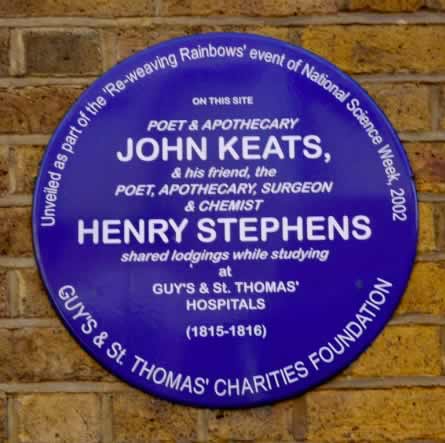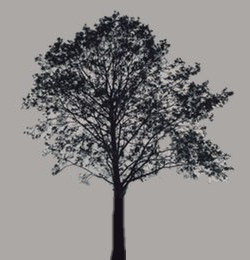October 1815: Keats’s Lodging as a Medical Student; Keats’s Interests in being a Poet
28 St. Thomas’s Street, London
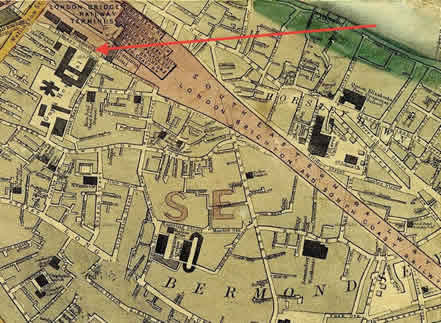
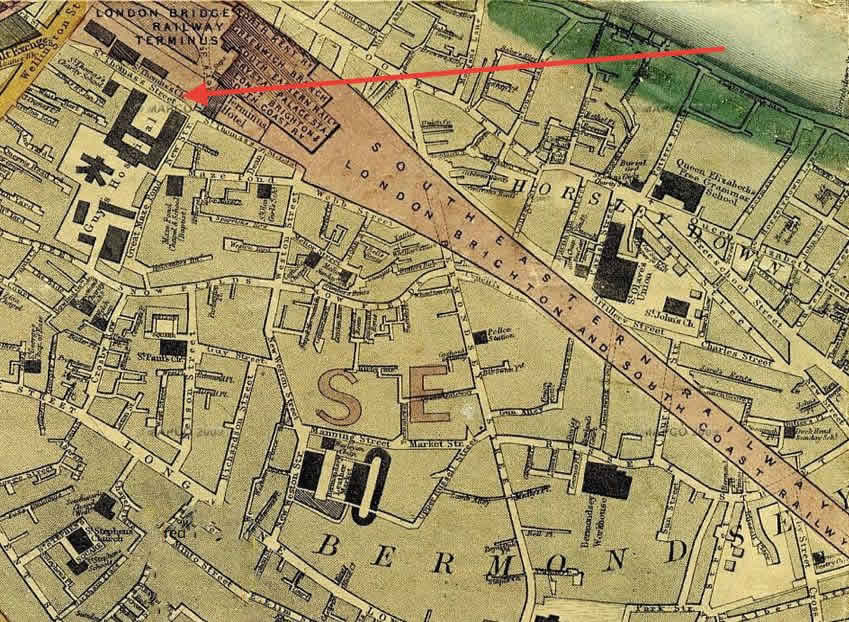
Where, with Henry Stephens, Keats lives as medical student for a year-long course while at Guy’s Hospital—this is after having completed an apprenticeship of five years. He is registered for the course at Guy’s by 1 October.
Keats must have been fairly serious about the medical profession: he opts for the year-long course rather than the six-month program also offered at Guy’s. Keats may also have been somewhat swayed by the ethos underpinning his training at Guy’s, one that acknowledges the idea of humanitarianism and charity in taking care of the ill, the injured, and the suffering.
Although Keats takes part in the life of student in the inner city, by around February we know that poetry also calls to him, and through into the summer he is composing, as well as falling into a minor poetic grouping centered by George Felton Mathew.
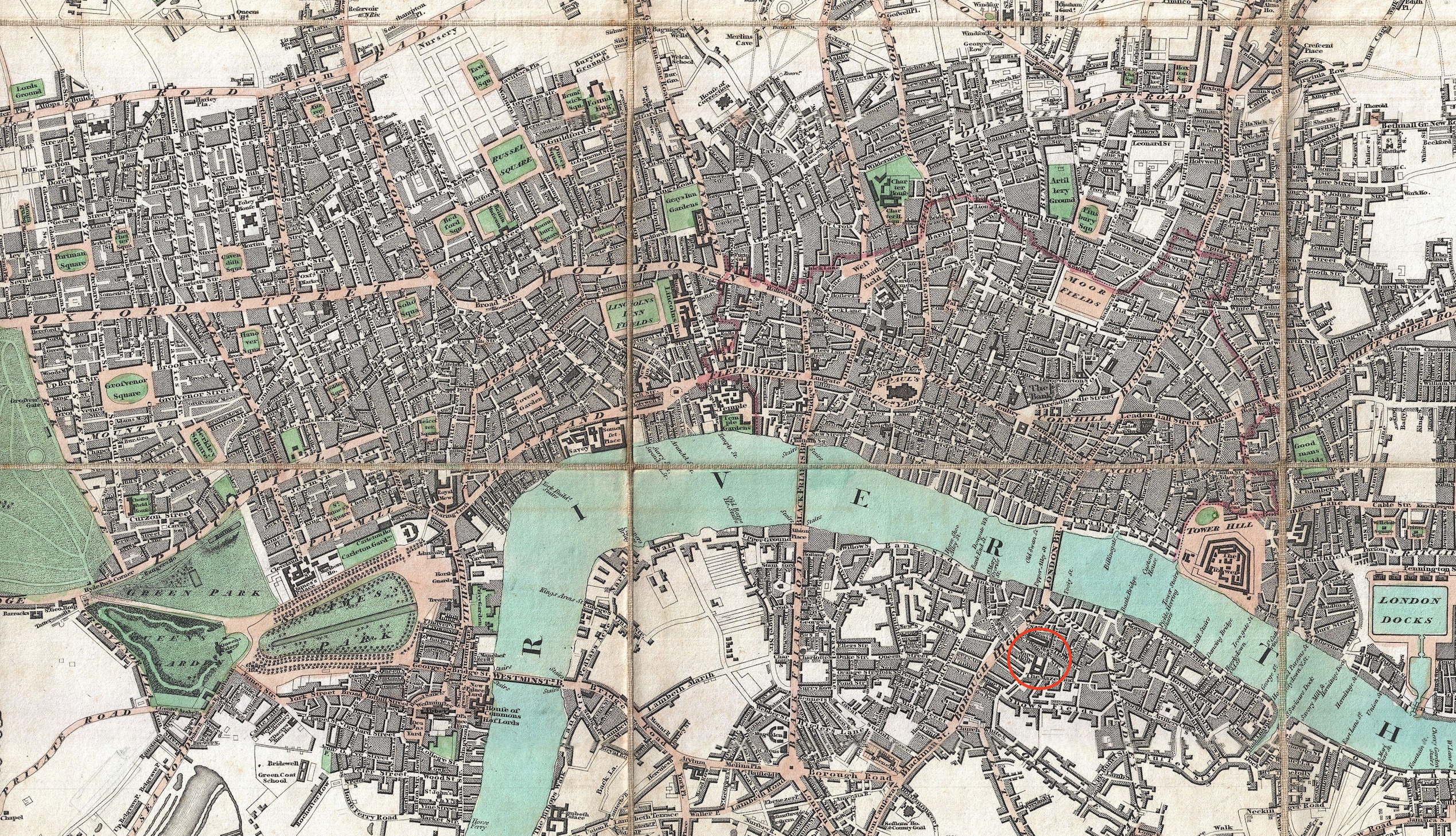

Keats’s friends from this period also recollect Keats’s literary interests, despite Keats being a good medical student—good enough, in fact, to be promoted for surgical dressership, which were few and highly valued. Some of his friends, however, will recall that Keats was not fully attentive as a student; but at least one other (Charles Brown) suggests that Keats was quite dedicated, at least initially, to his medical studies, and Keats’s medical notebooks show at some vigor.
During this time, Keats likely composes the somewhat accomplished (and Wordsworthian)
O Solitude, which is very
important inasmuch as it gets published in Leigh
Hunt’s Examiner, May 1816, marking Keats’s first
time in print, and also marking the first, albeit peripheral, entry into the Hunt
circle. The
published poem is signed J. K.
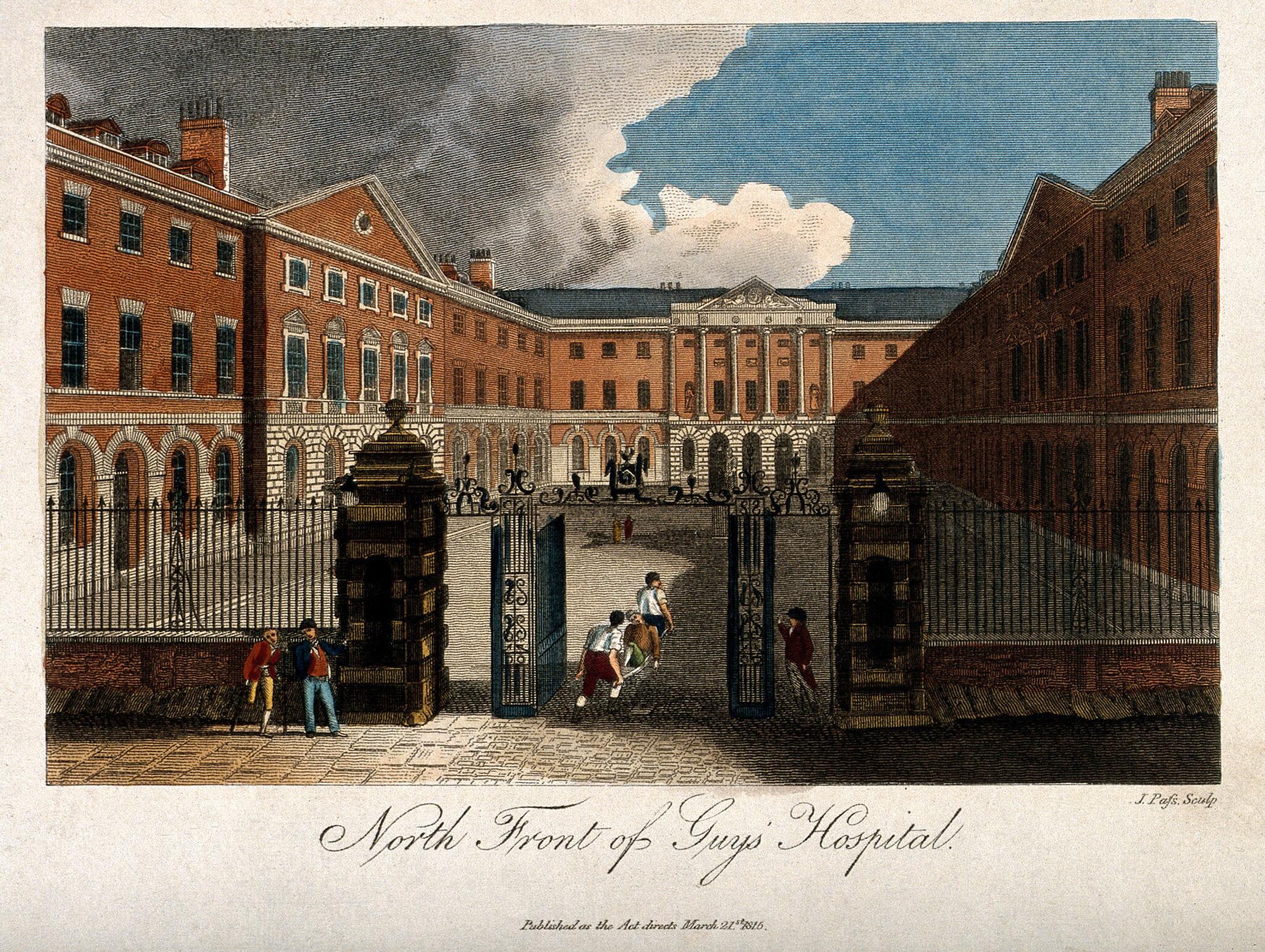

Stephens is himself interesting: he is a poet, chemist, doctor, inventor, and writer.
From
Stephens we learn, among other things, that Keats at the time is poetical enamoured
with Spenser and Byron, but not Pope, and that in seeing himself in print in The Examiner, and then in a brief piece that Hunt (in early December, also in The Examiner) writes about
Keats and two other up-and-coming Young Poets,
Keats decisively makes poetry his
calling. Between these two dates—May and December 1816—may, however, be the real turning
point: Keats actually meets his hero Hunt in October, and the two, as they say, hit
it off.
Keats is immediately launched into Hunt’s large, diverse, interesting, and supportive
circle,
mainly made up of poets, artists, journalists, publishers, book sellers, and scholars;
and as
for Hunt, he has another disciple. Keats must have been thrilled. His poetic progress
begins
in earnest, and the rest is literary history.
